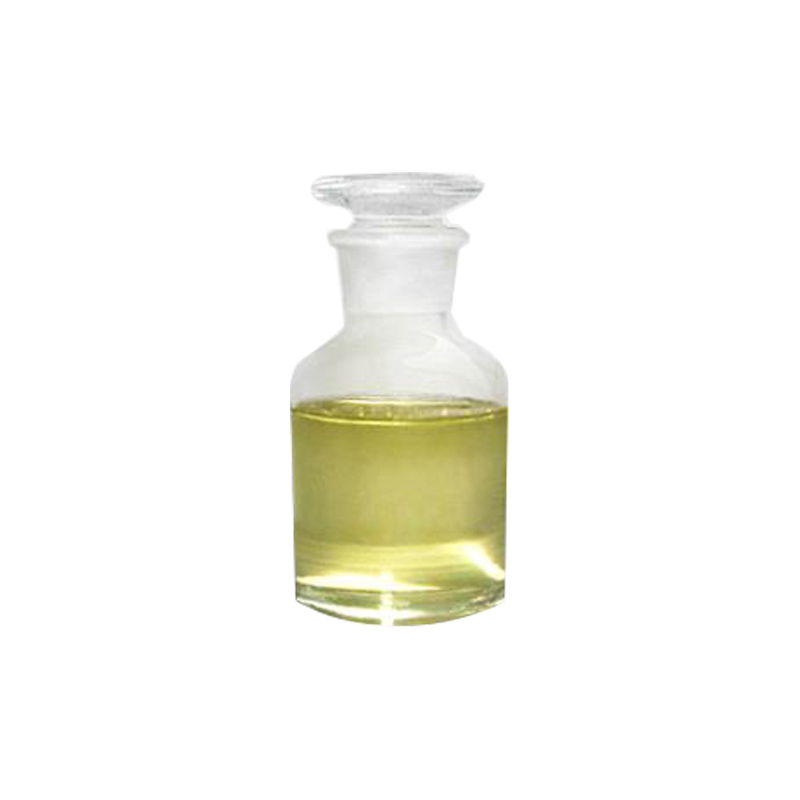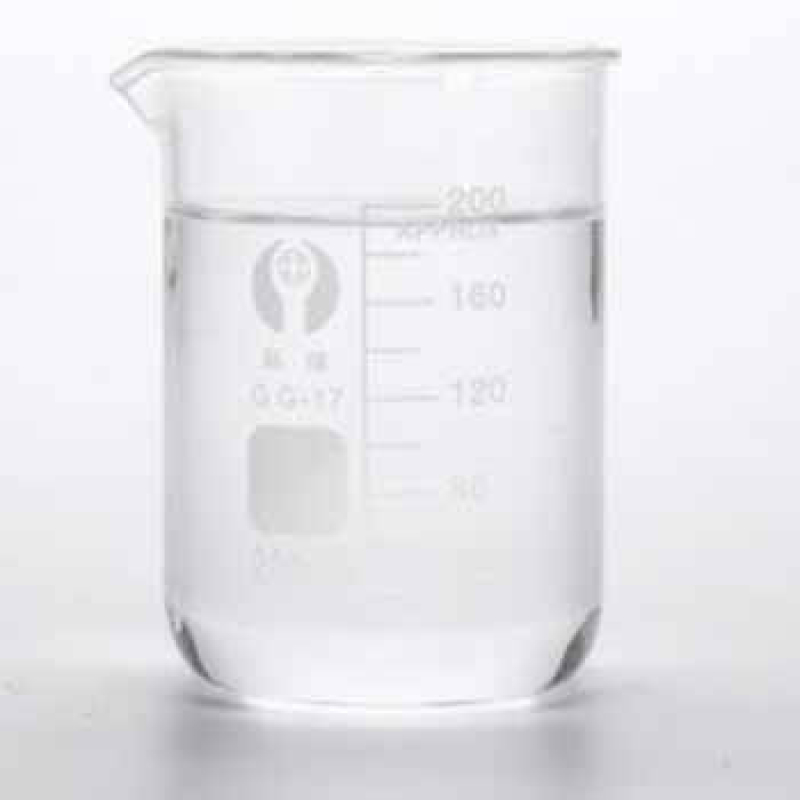Products Description of 3,4-Diaminotoluene CAS#496-72-0 3,4-Diaminotoluene is a chemical with the molecular formula C7H10N2.3,4-Diaminotoluene Chemical PropertiesMelting point 87-89 °C (lit.)Boiling point 155-156 °C/18 mmHg (lit.)density 1.2207 (rough estimate)refractive index 1.5103 (estimate)Fp 155-156°C/18mmstorage temp. Keep in dark place,Inert atmosphere,Room temperaturesolubility Chloroform (Sparingly), Methanol (Slightly)pka4.59±0.10(Predicted)form Crystalline Chunks or Flakescolor Brown to grayish-brownWater Solubility 16 g/L
Contact Now
Products Description of Propargylamine CAS#2450-71-7Propargylamine is a colorless or light yellow liquid at room temperature and pressure. The solubility of propargylamine in water is relatively low, but its solubility in common organic solvents such as ethanol, acetone, dimethylformamide and ether is high.
Contact Now
Products Description of Ethoxyquin CAS#91-53-2Ethoxyquin is abbreviated as EQ or EMQ, also known as ethoxyquin, and its trade names are Sandoquin, Sandoquin, Hupiling, and Ethoxyquin. A yellow to tan viscous liquid with a special odor. Insoluble in water, soluble in benzene, gasoline, ether, alcohol, carbon tetrachloride, acetone and alkyl dichloride Chemicalbook. It is easy to oxidize under natural light. When exposed to air and oxygen, the color becomes dark brown and the viscosity increases. It should be stored in an airtight container away from light.
Contact Now
Products Description of Triethylamine CAS#121-44-8 Triethylamine (molecular formula: C6H15N), also known as N,N-diethylethylamine, is the simplest homotrisubstituted tertiary amine. It has the typical properties of tertiary amines, including salt formation and oxidation. Triethylamine has no reaction in the Hisberg reaction. It is a colorless to light yellow transparent liquid with a strong ammonia odor and a slight smoke in the air. Boiling point: 89.5℃, relative density (water = 1): 0.70, relative density (air = 1): 3.48, slightly soluble in water, soluble in ethanol and ether.
Contact Now
Products Description of 1,2-Bis(2-chloroethoxy)ethane CAS#112-26-51,2-Bis(2-chloroethoxy)ethane is a transparent to slightly yellow liquid at room temperature and pressure, and is insoluble in water. It is often used as a material chemical intermediate and a reaction solvent in organic chemical reactions.
Contact Now
Products Description of 1-Dodecanethiol CAS#112-55-0Colorless or light yellow liquid. Melting point -7℃, boiling point 165-169℃ (5.19kPa), 142-145℃ (2kPa), relative density 0.8450 (20/20℃), refractive index 1.4589, flash point 87℃.
Contact Now
Products Description of Myristoyl chloride CAS#112-64-1Prepared by the reaction of myristic acid and phosphorus trichlorideMyristoyl chloride Chemical PropertiesMelting point -1 °C (lit.)Boiling point 250 °C/100 mmHg (lit.)density 0.908 g/mL at 25 °C (lit.)refractive index n20/D 1.449(lit.)Fp >230 °Fstorage temp. −20°Cform Liquidcolor Clear colorless to light yellow-brownWater Solubility MAY DECOMPOSEBRN 636924InChIKeyLPWCRLGKYWVLHQ-UHFFFAOYSA-NCAS DataBase Reference112-64-1(CAS DataBase Reference)NIST Chemistry ReferenceMyris
Contact Now
Triethylene glycol CAS# 112-27-6Triethylene glycol is a clear, colorless, viscous, secure liquid with a barely sweetish odor. Soluble in water; immiscible with benzene, toluene, and gasoline. Combustible. Because it has two ether and two hydroxyl companies its chemical residences are closety associated to ethers and foremost alcohols. It is a desirable solvent for gums, resins, nitrocellulose, steam-set printing inks and timber stains.
Contact Now
Products Description of 2-Amino-3,5-dichloropyridineCAS#4214-74-8White powder2-Amino-3,5-dichloropyridine Chemical PropertiesMelting point 81-83 °C(lit.)Boiling point 268.76°C (rough estimate)density 1.5462 (rough estimate)refractive index 1.6300 (estimate)storage temp. Keep in dark place,Inert atmosphere,Room temperatureform Powder or Crystalspka2.43±0.10(Predicted)color Off-white to pink to beigeWater Solubility insolubleBRN 119376InChIKeyOCWBGKZFOYMCCN-UHFFFAOYSA-NCAS DataBase Reference4214-74-8(CAS DataBase Reference)Safety Information
Contact Now
Products Description of 2,6-Di-tert-butylphenol CAS#128-39-2White or light yellow crystalline solid with phenol odor. Easily soluble in organic solvents such as alcohols, esters, alkanes, aromatic hydrocarbons, and almost insoluble in water.
Contact Now
Butylated Hydroxytoluene CAS#128-37-0Aluminium Sulfate (CAS#16828-11-8), also known as Alum, is a white crystalline compound widely recognized for its effectiveness in water purification and its versatility in various industrial applications.
Contact Now
Products Description of D-(-)-ERYTHROSE CAS#583-50-6D-erythrose-4-phosphate is an intermediate in the enzymatic conversion of carbohydrates.D-(-)-ERYTHROSE Chemical PropertiesMelting point <25℃Boiling point 144.07°C (rough estimate)alpha D20 +1° -14.5° (3 days, c = 11)density 1.0500 (rough estimate)refractive index 1.498storage temp. 2-8°Csolubility Methanol, Waterform syruppka12.49±0.20(Predicted)color light yellowWater Solubility Fully miscible in water.Sensitive HygroscopicMerck 14,3690BRN 1721698CAS DataBase Reference
Contact Now
Products Description of 2-bromo-3-methylpropiophenone CAS#1451-83-8White powder2-bromo-3-methylpropiophenone Chemical PropertiesBoiling point 134-135 °C(Press: 8 Torr)density 1.357±0.06 g/cm3(Predicted)InChIInChI=1S/C10H11BrO/c1-7-4-3-5-9(6-7)10(12)8(2)11/h3-6,8H,1-2H3InChIKeyQGGNDYQVUDZPJB-UHFFFAOYSA-NSMILESC(C1=CC=CC(C)=C1)(=O)C(Br)C Factory and Equipment ShowFast delivery timeInventory 2-3 working days New production 7-10 working days
Contact Now
Products Description of Shikonin CAS#517-89-5Shikonin (shikonin, shikonin, shikonin) is a class of natural products with naphthoquinone structure extracted from the root of Lithospermum officinale, which has anti-inflammatory, antioxidant, anti-tumor, and wound healing effects. In recent years, the anti-tumor effects of shikonin and its derivatives have been widely studied.Several in vitro and in vivo studies have shown that shikonin and its derivatives can effectively inhibit the occurrence and development of gynecological malignancies such as breast cancer and cervical cancer.
Contact Now
Products Description of Indigo CAS#482-89-3Indigo is a vat dye with a history of more than 3,000 years. Xun Kuang's famous saying of the Warring States Period, "Blue, comes from blue and is better than blue" originated from the indigo dyeing technology at that time. "Qing" here refers to cyan, and "blue" refers to the blue grass from which indigo is made.
Contact Now
Products Description of Inositol CAS#87-89-8Myo-inositol, also known as cyclohexanol, hexahydroxycyclohexane, cyclohexitol, myo-inositol, and inositol, is one of the B vitamins. There are 9 isomers due to the different orientations of the hydroxyl groups relative to the ring plane. body, 7 of which are non-optically active and 2 are optically active (left-handed and right-handed).In the natural chemical world, it exists in all biological tissues in free or combined form. It is a common component in animal and plant cells.
Contact Now
Products Description of 4-Amino-2-chloropyridineCAS#14432-12-3This product is white crystals, m.p.89~91℃, insoluble in water.4-Amino-2-chloropyridine Chemical PropertiesMelting point 90-94 °C(lit.)Boiling point 153°C 5mmdensity 1.2417 (rough estimate)refractive index 1.5110 (estimate)Fp 153°C/5mmstorage temp. Keep in dark place,Sealed in dry,Room Temperaturesolubility DMSO (Slightly), Methanol (Slightly)pka4.73±0.30(Predicted)form Crystalline Powdercolor Light yellowWater Solubility Slightly soluble in water.BRN 108671InChIKeyBLB
Contact Now
Products Description of 3-Ethyl-3-oxetanemethanolCAS#3047-32-3Mainly used for UV polymerization, synthesis of coatings and resins.
Contact Now
Products Description of N-[3-(Trimethoxysilyl)propyl]ethylenediamine CAS#1760-24-3N-(2-aminoethyl)-3-aminopropyltrimethoxysilane is a very representative silane coupling agent.
Contact Now
Products Description of Pyridazin-3-Amine CAS#5469-70-5Pyridazine-3-amine appears as a white or off-white solid powder at room temperature and pressure. It is a commercial drug molecule and organic synthesis intermediate. It can be used as a molecular skeleton to participate in the synthesis of drug molecules and bioactive molecules.
Contact Now
Products Description of Phenibut CAS#1078-21-34-Amino-3-phenylbutyric acid hydrochloride is often used to prepare antidepressants.
Contact Now
Products Description of Mogroside V CAS#88901-36-4 Mogroside V is extracted from a plant called Momordica grosvenori. Momordica grosvenori is a vine plant of the Cucurbitaceae family (Mogrosvenori genus). The mature fruit of Momordica grosvenori is extremely sweet and is rich in cucurbitane-type tetracyclic triterpenoid saponins, among which Mogroside V is the main sweet component, with a dry weight content of up to 1.6%.
Contact Now
Products Description of TRIDECETH-4 CAS#69011-36-5Condensation products of isomeric alcohol and ethylene oxideTRIDECETH-4 Chemical PropertiesBoiling point 290℃[at 101 325 Pa]density 0.907[at 20℃]vapor pressure 0.007Pa at 20℃Water Solubility 56mg/L at 20℃LogP4.73 at 25℃EPA Substance Registry SystemPolyethylene glycol mono(branched tridecyl) ether (69011-36-5) Safety InformationRIDADR 3082HazardClass 9PackingGroup IIIProduct Application of TRIDECETH-4 CAS#69011-36-5Isomeric alcohol ether E-1300 products are easily dispersed or soluble in water, a
Contact Now
Products Description of AGAROSE CAS#9012-36-6Agarose is a chain-like neutral polysaccharide composed of D-galactose and 3,6-endo-L-galactose.
Contact Now




















![N-[3-(Trimethoxysilyl)propyl]ethylenediamine CAS#1760-24-3](https://d3rnfhc14zcmdf.cloudfront.net/cdn/ff/1XTKAt_OOYi_hESPlOywnxqqrhOwjixyrJ7jbKv7qRw/1716845046/public/styles/chanpinzhutu/public/2024-05/%E6%97%A0%E8%89%B2%E6%B6%B2%E4%BD%93%20%282%29_20.jpg?itok=GEQYDPar)













